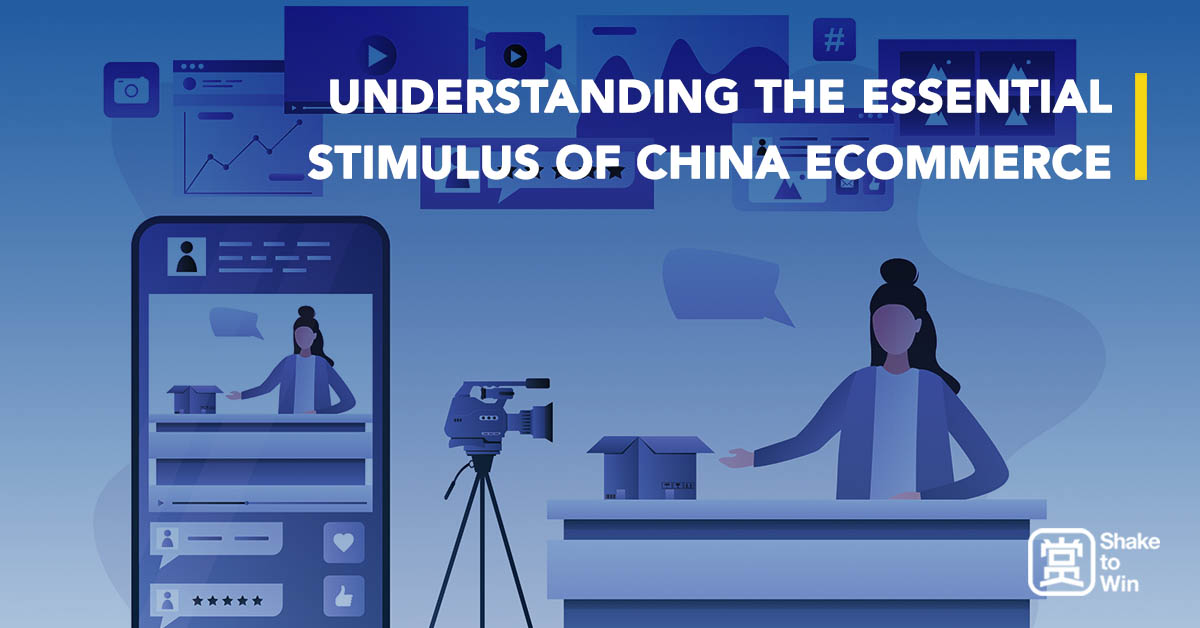Understanding the essential stimulus of Chinese E-commerce
Since 2015, China has had its digital payment boom bring great convenience and faster conversion for consumption. This includes goods and services from all categories including transport, retail, gig-economy, and any other imaginable service. This growth has been backed by the rapid growth of the Chinese middle class and major technological innovations brought about the large tech companies such as Tencent and Alibaba. During the start of the COVID-19 crisis, China became the world’s only major economy to register positive growth in 2020 making it a key market for international businesses looking to expand their revenue streams online. E-commerce adoption around the world has accelerated and it will be the next big market to see rapid growth as the West catches up to the East. According to Global Data’s E-commerce analytics, the Chinese e-commerce market was $2.1 trillion in 2021 and is expected to reach $3 trillion by 2024. So what have been the key drivers for China’s e-commerce markets?
A rapidly evolving digital ecosystem

Over the years, new business models have emerged as Chinese consumers became accustomed to a large digital presence within their lives. For example, WeChat, the number one social platform for chatting online, revolutionized the digital ecosystem by incorporating various digital services and solutions into one app. Delivery, group buy, content creation, social media, e-commerce, financial loans, house payments, and more can all be managed in a single mobile application without interruption. Furthermore, with the launch of mini-apps on WeChat, businesses no longer need to build sophisticated apps from the ground up, instead, they can leverage the existing digital ecosystem built by Tencent and other tech companies to grow their business.
While numbers for international brand sales volumes in China have diminished during the epidemic, it is an expected effect caused by the limitations of the virus that made Chinese consumers more price sensitive. In fact, Chinese consumers are now less loyal to brands and open to spending on brands that fit their specific needs. Safety, health, quality, and price are some of the main factors Chinese consumers consider when making a purchasing decision and during the epidemic with consumers only choosing to buy goods sourced from abroad in order to quench their cultural curiosity when travel abroad is not possible.
An Omni-channel approach

Joining an e-commerce platform in China is not just about putting another product into the Chinese market. It must cover the scope of marketing, branding, content, and conversion using an omnichannel approach. Unlike a multi-channeled approach that focuses on creating more touch points with consumers, China’s digital ecosystem requires an omnichannel approach. This means creating an interconnected and connected consumer experience that makes the purchase of goods seamless on multiple platforms that help your business grow in a consistent manner.
Among the solutions, Chinese content creation and social commerce have become more relevant today. China targets the interests of young Chinese consumers through both offline and online channels using live-streaming, offline campaigns, branding/promotion, and social media. Each touchpoint corresponding to a new experience or part of the user journey. Here are the basics:
- Content – generates interest and engagement in your brand/product through education, entertainment, and tips. (Videos are preffered)
- Offline – while online is important, consumers expect a physical touchpoint where they can physically interact. This is coupled with AR and other digital technologies which consumers can use to extract benefits, and build loyalty points for special discounts or other promotions
- Social Media (Online) – communication that establishes brand tones, updates, and interest-based content that can be shared on social channels. It is also where most time is spent online making it a vital part of your business’s awareness and offerings
- Live-streaming – done on social commerce platforms such as Douyin/Kuaishou that allows direct communication between the consumer and the brand with integrated e-commerce capabilities. It is also a space that can leverage key opinion leaders or influencers to build the value of your product and allow for better conversion
Live-streaming is building momentum with social commerce

According to a report by Bain & Company, internet-driven trends, and live-streaming e-commerce, will likely build on the previous year’s growth for a total of $312.5 billion GMV in 2021. This will be coupled with an increasing base of influencers involved in the gig economy including live streaming Key opinion leaders (KOLs) and celebrities taking part in more social media platforms in the future. In fact, such trends can be seen in the west as well with major Hollywood celebrities such as Will Smith, Jack Black, Brie Larson already joining platforms like Twitch and Youtube. This will indicate how the influence of KOLs will shift as the influencer markets become more competitive and saturated.
With the combination of social media and live streaming, consumers are more engaged than ever. For new businesses in this day and age, it is not enough to have an online shop or physical store, live streaming becomes a great opportunity to build brand awareness and make a connection with fans. Larger brands have already jumped on the bandwagon by creating their own streaming setup independently. This was seen through last year’s 618 e-commerce festival, which revealed that about 40% of live streams on Taobao Live were hosted by the brands themselves, and about 70% by brands that partook in the 11.11 Singles Day Shopping Festival in November.
At the same time, it is important to note that fraud and social harm have become a big issue for Chinese authorities when it comes to live-streaming in China. Major scandals of false information during live streams, overindulgence by increasing food waste, and anything that would negatively affect local society has been criticized by the government in the past. In the future, it is expected that a set of standards for appropriate content and consumer protection regulations will be created and it will be the brand’s responsibility to navigate such potential regulations.
Efficiently navigate the China e-commerce market with Shake to Win
Shake to Win provides a quick and simple solution that facilitates entry into China’s digital ecosystem. By offering a comprehensive scope of interlinked services such as localization, regulatory compliance, market consultation, digital payment & e-commerce integration, as well as promotional marketing campaigns and branding, Shake to Win is able to build value for brands efficiently at a low cost. At the same time, we value our clients’ brand and integrity as part of our mission, to appreciate cultural understanding between China and the world. We have a specialized team of e-commerce experts and networks with top influencers and KOLs that can be easily picked out depending on your brand’s needs. With over 10 years of international and local Chinese experience within this market, Shake to Win will be able to guide your brand to make the right decisions in the China market along the way. If you are interested in any business collaboration or have any inquiries, please reach out to us at partnership@shaketowin.net.




